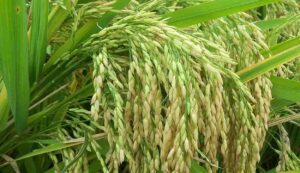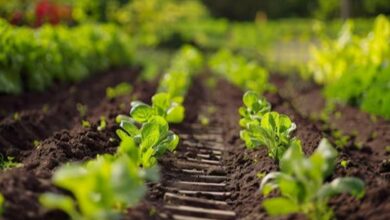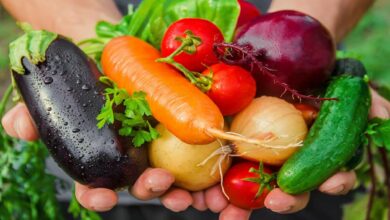Basmati Rice Cultivation: Cultivate these top 5 improved varieties of Basmati rice, there will be more production
Basmati Rice Cultivation: Many Indian states, including Punjab, Haryana, Uttar Pradesh, Uttarakhand, and Delhi, grow basmati rice. Pusa Basmati rice comes in a variety of enhanced cultivars that are renowned for their exceptional quality grains, high production, and resistance to disease. Pusa 1592, Pusa Basmati 1609, Pusa Basmati 1637, Pusa Basmati 1692, and Pusa Basmati 1886 are the principal varieties in this group.

All of these types have an average yield of 42–52 quintals per hectare, with a maximum potential output of 67.3–80 quintals per hectare. These cultivars are immune to bacterial blight, blast, jhounka, and blight. They are highly sought after in the market because, once ripened, their grains are lengthy and aromatic. Tell us more about these types in depth.
1. Pusa Basmati 1592
Grown mostly in the Basmati-producing regions of Punjab, Haryana, Delhi, and Jammu & Kashmir, Pusa Basmati 1592 is an enhanced and very prolific type of Basmati rice. During the Kharif season, this cultivar is farmed using irrigation. This cultivar produces 47.3 quintals per hectare on average, with a potential yield of 67.3 quintals per hectare. In around 120 days, it ripens.
The primary characteristic that sets the enhanced rice variety Pusa Basmati 1592 apart from others is its resistance to blight disease. This variety’s grains are transparent, thin, and long (14.0 mm). This type is more valuable on the market because the grains have an overpowering scent after ripening. In addition, this variety yields 58.2% of rice, making it advantageous from a production standpoint.
2. Basmati Pusa 1609
The National Capital Region (Delhi), Punjab, and Uttarakhand are basmati-producing regions where the Pusa Basmati 1609 variety is cultivated. It is permitted to grow. Additionally, this variety is planted throughout the Kharif season and is irrigated. The production has the potential to reach 67.5 quintals per hectare, with an average of 46.0 quintals per hectare. It takes 120 days for this type to mature as well.
The enhanced Pusa Basmati 1609 paddy variety’s resistance to blast disease is one of its characteristics. It has thin, fragrant grains that are extremely long (7.9 mm). The grain is 13.9 mm long after ripening, making it both aesthetically pleasing and high-quality. Farmers benefit from the production of this variety because it yields high-quality rice that sells for a decent price.
3. Basmati Pusa 1637
The Pusa Basmati 1637 variety is cultivated in regions of western Uttar Pradesh, Uttarakhand, Punjab, Haryana, and Delhi that produce basmati. It can produce up to 70.0 quintals per hectare, but its typical output is 42.0 quintals per hectare. This cultivar takes 130 days to reach maturity and is also cultivated during the Kharif season.
The enhanced Pusa Basmati 1637 paddy variety has the added benefit of being resistant to Jhaunka disease. It has thin, long (7.3 mm) and very fragrant grains. Its quality is further enhanced by the grains’ 13.8 mm length after ripening. Farmers benefit from this variety’s great quality and production, which enables them to sell their produce for a profit.
4. Basmati Pusa 1692
Grown mostly in the Basmati-producing regions of Delhi, Haryana, and Western Uttar Pradesh, Pusa Basmati 1692 is a semi-dwarf cultivar. It may produce up to 73.5 quintals per hectare, with an average yield of 52.6 quintals per hectare. It matures earlier than other kinds, taking 115 days to reach maturity.
The primary characteristic of the enhanced Pusa Basmati 1692 paddy variety is its short duration and high yield, both of which are very advantageous to farmers. It is even more appealing because of its very long and thin grains, which reach 17.0 mm in length after ripening. Its quality is further improved by the powerful scent of its grain. In particular, this type aids in obtaining higher market prices.
5. 1886’s Pusa Basmati
The Basmati-producing regions of Uttarakhand and Haryana are home to the Pusa Basmati 1886 varietal. It is irrigated and cultivated during the Kharif season. It can produce up to 80.0 quintals per hectare, but its typical yield is 44.9 quintals per hectare. It takes 145 days to mature.
With Xa13 and Xa21 genes resistant to bacterial blight and Pi2 and Pi54 genes resistant to blast disease, this enhanced rice variety’s primary characteristic is its resistance to both bacterial blight and blast illnesses. This variety’s grains are thin and long (7.8 mm), and they reach a length of 15.2 mm after they have ripened. Its strong scent and intermediate amylose (23.7%) set it apart from other types.





